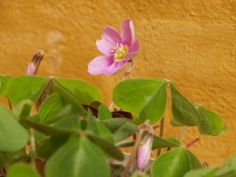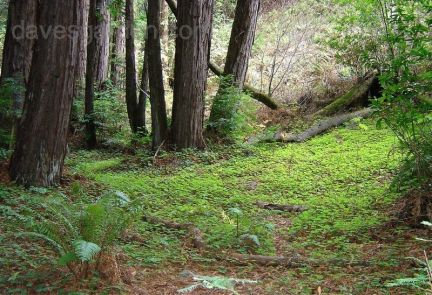- Sommer Growing Oxalis A ~ N
- Summer Growing Oxalis O ~ Z
-
Photo album; summer growers
- Oxalis Acetosella
- Oxalis Alpina
- Oxalis Alpine Species *
- Oxalis Articulata species *
- Oxalis Brasiliensis
- Oxalis Carnosa
- Oxalis Corymbosa species *
- Oxalis fontana var. rufa
- Oxalis Griffithii
- Oxalis Lasiandra/Magnifica.
- Oxalis Latifolia species *
- Oxalis magellanica
- Oxalis Magellanica Nelson
- Oxalis Oregana Species *
- Oxalis Ortgiesii
- Oxalis Rosea
- Oxalis Rusciformis
- Oxalis Silver and Gold
- Oxalis Tetraphylla
- Oxalis Tetraphylla "Iron Cross"
- Oxalis Triangularis species *
- Oxalis Violacea
- .
- ~ * ~ * ~ * ~ * ~ * ~ * ~
- Winter growing oxalis A ~ N
- Winter growing oxalis O ~ Z
- Photo album; winter growers
- UFO
- .
Care ~
Taking care of your Oxalis Oregana is not that difficult as long as they are not kept to hot or dry.
It prefers shade to partial shade, soil on the slightly moist side, but not completely wet.
This species does not take well to dry conditions and burning sun, for to long, it simply dies.
The rhizomes are woody-root like, which I believe can not retain much moisture or vitality, and therefore dry up quickly.
To make your oregana happy plant it in regular potting soil, and place in a cool semi shaded area during summer, this will become it very well indeed.
If you are planning on having it on the ground, just remember, not to expose it to hot sun for to long, water regularly and it will thank you with the most amazing foliage.
Remember; have an extra eye on it during hot summers.
Unlike most other oxalis, Oregana is an evergreen species and therefor does not have a dorment periode.
Propagation, rhizomes and preferetly fresh seeds
Hardiness ~
I´m not a great fan of Temperature Zones, as temperatures and other factors can vary a great deal within the given zone.
My experience growing Oxalis Oregana is that it does not do well when exposed to temperatures under -5.
But we have to consider that they are grown in pots and therefore more exposed to cold and wind. If you have any hardiness experience please ad it here

~ Oxalis Oregana Species
Common Name; Redwood sorrel, Oregon Oxalis

Oxalis Oregana in habitat, California
Photo; with much thanks to Kelli Kallenborn.
Charasteristics and Habitat ~
Oxalis Oregana is a evergreen perennial herb, with heart shaped leaflets that grows between 5 to 15 cm tall.
Leaf and flower stalks are both about the same length and attached to the rhizome. It is basal.
Oxalis Oregana is mainly found in the North Western moist and shady redwood forests of Washington, California, Oregon U.S.A, and British Columbia in Canada as well.
In their natural habitat, Oxalis oregana grows under tress and bushes forming a carpet of greenery through the woods.
Because of it´s natural habitat Oxalis Oregana is considered to be a woodlands oxalis, together with
Oxalis Acetosella
Oxalis Trilliifolia
Oxalis Griffithii
Oxalis Montana
A close related species can be found in and around the Oxalis Oregana habitat, namely Oxalis Trilliifolia.
This species has white flowers and bears two or more flowers per stalk, and does not have the characteristic lighter marking on the leaflets nighter.

Leaves ~
Leaves are basal, witch means the stalk (petiole) grows directly from the rhizome.
Oxalis Oregana leaves are almost amongst the biggest in the triangular and heart shaped species, the biggest so far in the garden has been
7 cm/2.7 inch in diameter!
The stalk is 5-15 cm long, and covered with fine hair (pubescens)
Oxalis Oregana has also pubescent trifoliate (tree) heart shaped green leaflets, with a lighter marking in the center of each "heart".
Colour can vary from deep green to a lighter shade, some Oregana´s, as Klamath Ruby, have deep purple coloration under each leaf.
Flower ~
Flower consist of five petals and sepals, colours vary from white to dark pink, with purple veins.
Flowers stalks are basal - the stalk grows directly from the rhizome- and bears a single flower at the end. Throughout summer the plant can produce a cleistogamus flower, which produces fertile seed pods.
These flowers are shorter, smaller, lighter and can be difficult to see if you are not looking.
The seed pod looks almost like a five cornered raisin. Seeds are very small almond shaped, and are spread to the surroundings when they are mature.
Blooms; April to July
Rhizomes ~
Oxalis Oregana rhizomes are woody like creeping undergrowth that resemble slender light coloured roots.